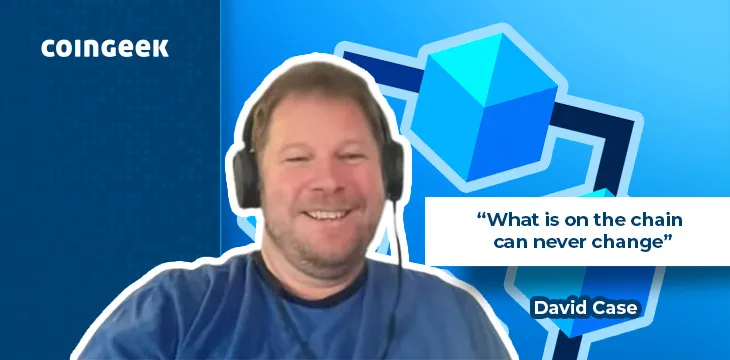|
Getting your Trinity Audio player ready...
|
In the 10th episode of season three of the CoinGeek Weekly Livestream, Kurt Wuckert Jr. talked to Nicolas Ryan-Schreiber and David Case about the future of AI-generated art on Aym. AI-generated anything is a hot topic right now, so this conversation was extremely interesting.
Introducing David Case and Nicolas Ryan-Schreiber
Case has been on several of Wuckert’s shows before, and he may be familiar to many in the BSV ecosystem. He begins by saying he left CryptoFights in January and has since been having a blast tinkering with BSV endeavors.
Ryan-Schreiber got into Bitcoin in October of 2021. He was drawn in by a desire to understand Web 3.0 and discovered Daniel Krawitsz, who led him to Bitcoin SV. From there, he absorbed Wuckert’s knowledge of Bitcoin and became obsessed.
What is Aym, and what happened to RUN?
Ryan-Schreiber’s project is Aym. He likes the name because it’s short and representative of ‘I am.’ He got into AI-generative art last summer and thought about how to use Bitcoin to make it financially viable to generate these images professionally.
There are two sides to this, Ryan-Schreiber explains. First, there are the Bitcoin wallets for payment, but then there are all sorts of other tokens, which are the generative art and will be the artifact archive he speaks about throughout the interview.
Wuckert wants to know more about Aym and whether they are looking for artists or art fans. Ryan-Schreiber answers that some people have become incredibly good at prompting generative systems, and Aym is a way to get access to them.
What is their rollout schedule? Ryan-Schreiber answers that they’ll be putting out the minter and artifact archive this week, and the marketplace will soon follow. In a couple of weeks, the bounty system will also be live.
Does BSV need another token protocol, and what happened to RUN?
Wuckert asks if this was going to be built on RUN tokens, and Ryan-Schreiber confirms it was. He then asks Case to explain why people are pivoting away from RUN. Case answers that there are two reasons; the company that was maintaining some of the infrastructure has moved on, and there was a commingling of data between apps, making it a nightmare to scale. Case came face to face with some of these problems when working on CryptoFights.
Wuckert then wants to know more about the token protocol Aym will utilize, and he asks if BSV really needs another one. Case doesn’t think there will be more token wars, and it won’t conflict with things like Tokenized or STAS. He says the big breakthrough is realizing this is native to Bitcoin and will become standard on all UTXO chains. “It’s going to revolutionize all tokens on all UTXO chains,” he says.
What the heck is Ordinals?
Sticking with the subject of token protocols, Wuckert asks Case to explain what Ordinals are and what makes them different from other token protocols on Bitcoin.
Case explains that, for many years, there has been a concept in Bitcoin called ‘colored coins.’ He asks us to imagine having a pocket full of quarters, one of which is blue. We’d rightly identify it as different from the others. On Bitcoin, this would require a special script so that when the coin is spent, it maintains its unique color.
Ordinals is simply the reintroduction of this concept of coloring coins on Bitcoin. This involves assigning a serial number to every satoshi as it is mined, making it possible to track the entire history of that sat easily. The other part of the Ordinals protocol is the ability to associate files with satoshis. It’s easy because it’s native—it’s literally part of what Bitcoin is.
Are things like atomic swaps possible with Ordinals? Case says there’s no way to move a satoshi from one chain to another, but he sees some interesting potential for unsplit coins from before 2017. Wuckert laughs, imagining Dr. Craig Wright uploading a book or something else to an early satoshi, causing it to appear on all chains simultaneously.
At its core, the Ordinals protocol simply allows anyone to associate a file with a satoshi, Case says. Using other protocols on BSV would enable us to do more exciting things, like putting names and titles on them, too.
Can Ordinal inscriptions and data or inscriptions be edited and updated? “What is on the chain can never change,” Case says. However, if someone inscribes the same satoshi with another image, there are questions about whether it should be treated as an update, an additional image, or something else.
About AI-generated art
Wuckert wonders whether there’s a difference between AI-generated art today and a year or two ago with projects like Bored Apes. Are there infinitely more variables? What’s different?
Ryan-Schreiber answers that NFTs have been primarily about speculation and sometimes about community. Now, the images are more functional. Whatever your imagination can conjure, a good prompter can do it. For example, they could create enticing images for web articles, improving click-through rates.
Could AI programs like ChatGPT put white-collar professionals like graphic designers out of business? Possibly, but apps like Aym will also open up new opportunities. “AI is like a hammer, not a god,” Wuckert reflects. Ryan-Schreiber adds that millions of people will use these tools, and the more creative the person using them is, the more interesting the results they get will be.
Watch: Re-Inventing Business with Blockchain

 09-14-2025
09-14-2025 





